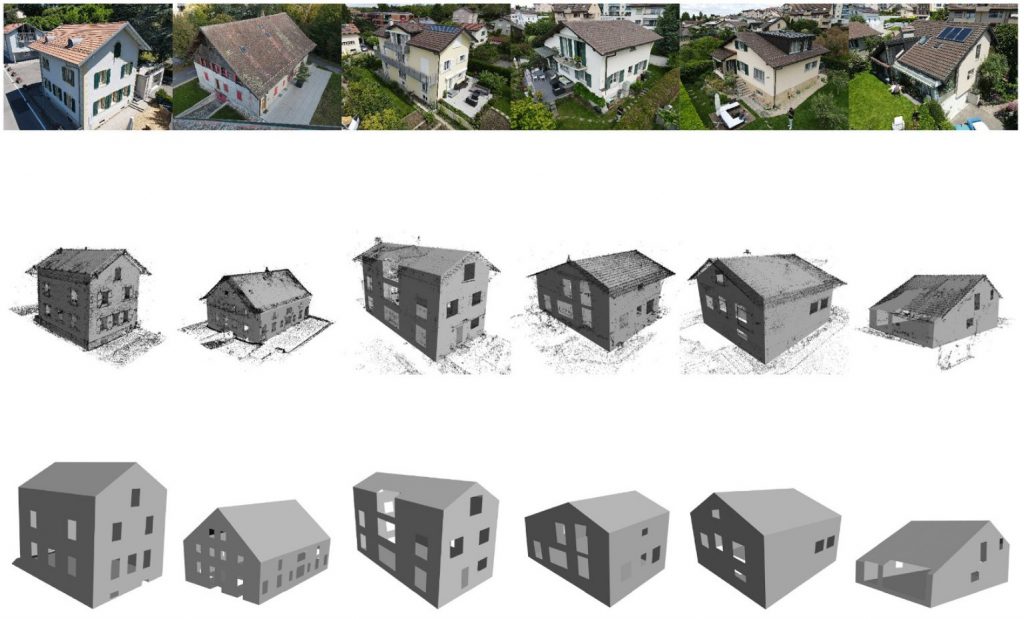Digital twin models are increasingly being used in applications such as construction management, city planning, and mechanical analysis. These models provide a virtual representation of physical objects or systems, which can be used to simulate and optimize performance, monitor real-time data, and predict future behavior. However, creating accurate and detailed geometrical digital twin models can be a time-consuming and labor-intensive process, especially for complex structures such as buildings.
In a recent research study, we proposed a novel approach for automatically generating geometrical digital twin models of free-standing buildings with different levels of detail (LOD2 and LOD3) using computer vision and deep learning techniques. Our approach combines structure from motion (SfM) with deep-learning-based segmentation techniques to extract 3D information from multiple-view images of buildings.
For LOD2 models, we computed a 3D planar abstraction of the point cloud. To obtain LOD3 models, deep learning was used to perform semantic segmentation of the openings in the 2D images. Unlike existing approaches, the proposed method does not require complex input, pre-defined 3D shapes, or manual intervention. We demonstrated the robustness of the method by generating 3D building models from a collection of building images with no further input.
For evaluating reconstructions, we proposed two novel metrics. The first is a Euclidean–distance-based correlation of the 3D building model with the point cloud. The second involves re-projecting 3D model facades onto source photos to determine dice scores with respect to the ground-truth masks.

This automated approach has the potential to significantly reduce the time and effort required to create geometrical digital twin models of buildings, which could have important implications for applications such as urban planning, energy efficiency, and disaster response. For example, the models could be used to simulate the impact of different design and construction scenarios on energy consumption, thermal comfort, and indoor air quality. The models could also be used to assess the structural integrity of buildings and predict their behavior in the event of earthquakes, fires, or other disasters.
- Article:
- Generating LOD3 building models from structure-from-motion and semantic segmentation [journal link]
- Source code: [source code link]
- Dataset: [dataset link]
- Funding: This work was partially funded by the Swiss Data Science Center (SDSC).